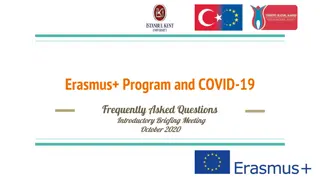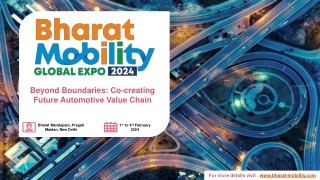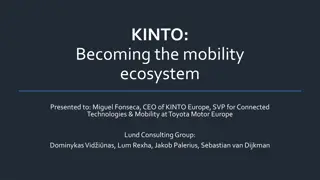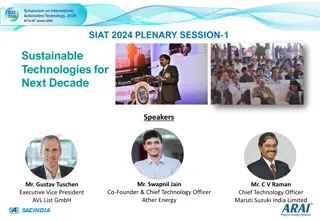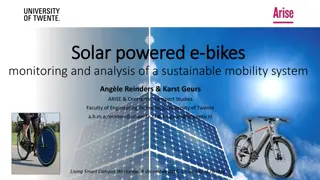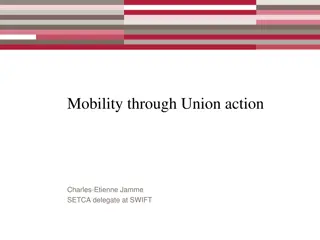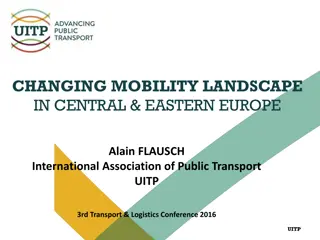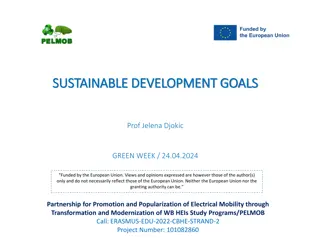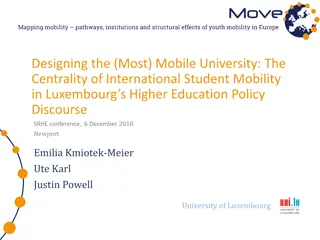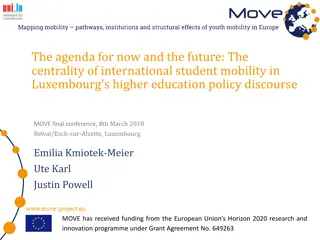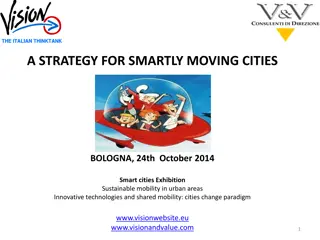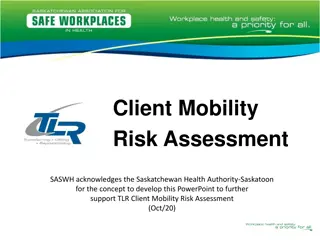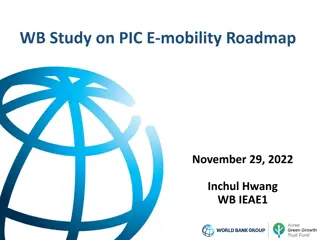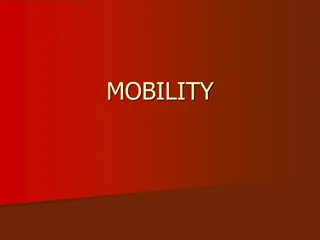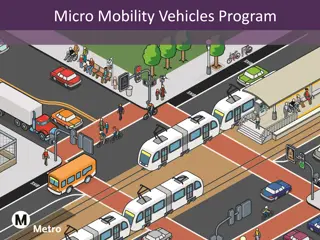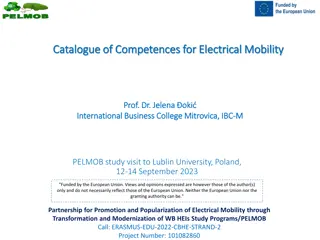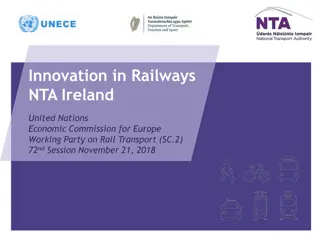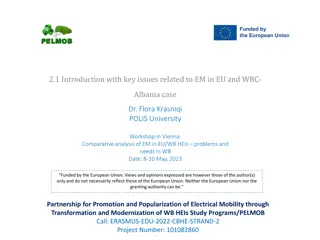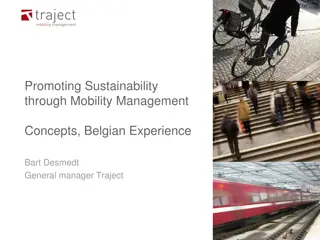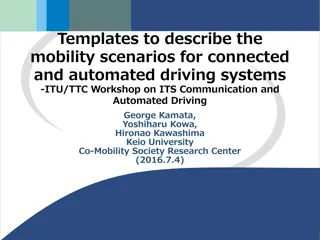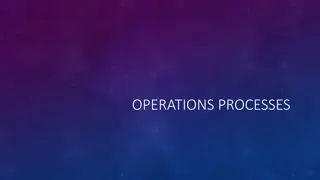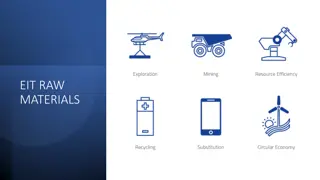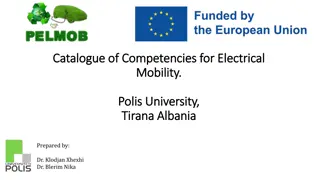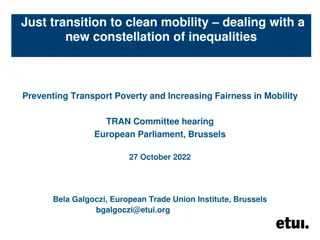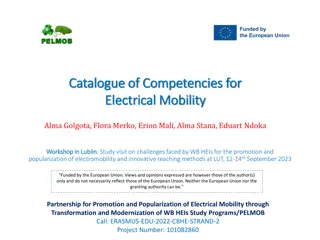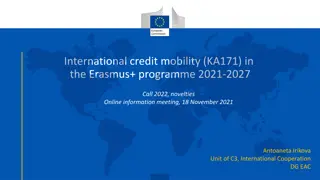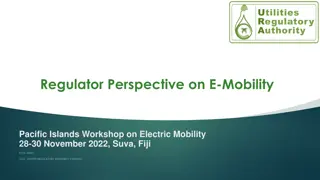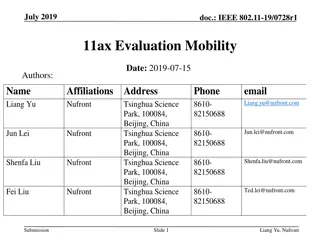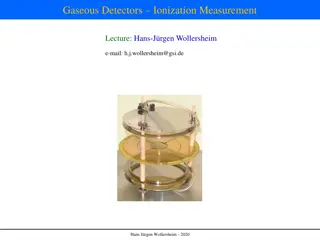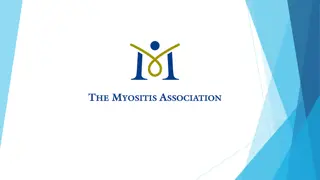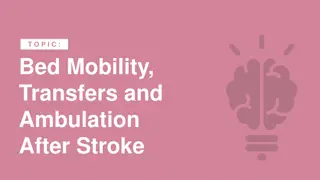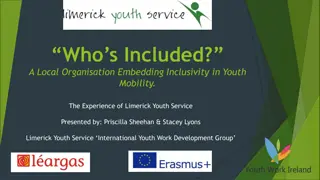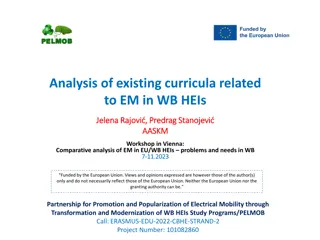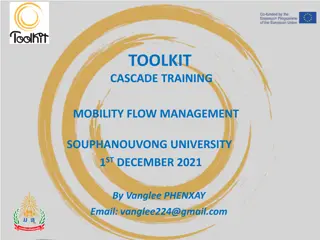Transforming Mobility for a Sustainable Future
Explore the pivotal role of optimized transport systems in fostering equitable, efficient, safe, and green mobility. Delve into initiatives driving global responsibility, impacting lives positively, and aligning transport projects with key objectives for a better world.
Download Presentation

Please find below an Image/Link to download the presentation.
The content on the website is provided AS IS for your information and personal use only. It may not be sold, licensed, or shared on other websites without obtaining consent from the author. Download presentation by click this link. If you encounter any issues during the download, it is possible that the publisher has removed the file from their server.
E N D
Presentation Transcript
Optimizing Outcomes for Equitable, Efficient, Safe, and Green Mobility Nancy Vandycke Walid Abdelwahab
MAKING THE MOST OUT OF TRANSPORT INVESTMENT Transport commitments, by MDB (US$ billions, 2015) $8 $6.70 $7 $6 $5.30 $5 $4 $2.80 $3 $2.50 $1.90 $2 $1.50 $1.40 $0.60 $1 $0 AfDB AsDB CAF EBRD EIB IaDB IsDB World Bank Source: Progress Report on the MDB Working Group on Sustainable Development (Jan 2017).
THE ROLE OF TRANSPORT FOR THE SUSTAINABLE DEVELOPMENT GOALS Source: SLOCAT
TRANSPORT FOR A DIFFERENT FUTURE? GREENER? MORE EQUITABLE? MORE EFFICIENT? SAFER?
A GLOBAL RESPONSIBILITY MOBILITY OF GOODS AND PEOPLE Trade-offs Between Objectives GREEN SAFETY EFFICIENCY EQUITY Increase efficiency of transport systems and services Shift transport infrastructure and services to a green , clean and resilient path Improve safety of mobility (SDG target 3.6 on road safety) Ensure equity in access to opportunities
OUR ULTIMATE IMPACT Improved lives and livelihoods of billions of people across the world including health, environment, quality of life, and climate change stabilized over the long term.
OUR PROJECTS DO NOT AIM AT THE 4 OBJECTIVES Percentage of FY17 World Bank Transport Projects whose Project Development Objective and Indicators align with the 4 objectives Access for All 67% 100% 100% Green Mobility Efficiency 79% 29% 100% 100% * Transport Projects approved in FY17. Excludes Additional Financing. ** Percentages shown are for PDO Indicators Safety 54% Project Development Objectives PDO Indicator
DESIGN AND MEASUREMENT FOCUSES ON OUTPUT M&E provides insight about project execution and project outputs Most Common Project Development Indicators are Roads Improved, Number of Direct Beneficiaries, Travel Time However, these short term indicators lead to sustained long term outputs and impacts
MOVING FROM OUTPUT TO OUTCOMES Final Outcomes/ Impact Output Intermediate Outcomes - Job Opportunities Accesibile - Firm Investment - Mode choice - Trade - Travel Time - Household income - Regional Integration - Preservation of Ecosystems - Health Costs - Women Economic Empowerment - Labor Productivity - Prices - Land Use - Congestion - GHG Emissions - Crash Rates - Kilometers of Roads Built - Jobs (direct) Construction - Beneficiaries
ieCONNECT FOR IMPACT: OPTIMIZING 4 OBJECTIVES Equity Efficiency Road Safety Green Mobility - Social Costs (e.g. due to air pollution) - Preservation of Ecosystems - GHG Emissions - Productivity - Industrial or Agricultural Output - Regional Trade and Integration - Women Economic Empowerment - Labor Market Outcomes: incomes, participation - Crash, Injury and Fatality Rates - Social Costs (economic and health related)
SCALING UP IMPACT EVALUATION Phase I of ieConnect for Impact program was launched in 2015: Partnership: UK Department for International Development (DFID) World Bank Development Impact Evaluation (DIME) Team World Bank Transport and ICT Global Practice Goal: Transform the Growth Potential of Transport Investments Contribution: Initial Allocation of $2.15 million through i2i to Transport and ICT Strategic Priorities: Urban Mobility, Development Corridors, Road Safety
WHAT IECONNECT FOR IMPACT HAS DONE SO FAR Mauritania Rwanda Nicaragua Colombia Ethiopia Nigeria Brazil Safety Kenya ICT Peru Corridors Urban Tanzania Rural Roads
LAUNCHING PHASE II 22 New Experiments with the following priorities: Regional Distribution Transport Focus Thematic Distribution Expansion to other MDBs 1. Co-financed programs 2. Non-WB co- funded IE 3. Additional MDBs involved at operational level 1. Africa (75%) 2. South and Southeast Asia (10%) 1. Low/lower middle income (100%) 2. Gender (30%) 3. Fragile and Conflict States (50%) 1. Transport Corridors (30%) 2. Urban Mobility (25%) 3. Road Safety (25%)
WHAT WE EXPECT FROM YOU Use your project to think about contributing towards the 4 global objectives Stretch your mind for impact evaluation design and measurement Open your project to new ideas
ISTANBUL, TURKEY MAY 11-14 Thank You!
ANNEX: WHAT IS IMPACT EVALUATION? Impact Evaluation assesses the outcomes that can be attributed to a particular project, program, or policy. The central question: How would outcomes have changed if the project or policy had not been implemented?
ANNEX: THE ieCONNECT FOR IMPACT INITIATIVE Tests interventions (policies, regulations and infrastructure) in order to optimize outcomes for equitable, efficient, safe, and greenmobility Uses non-experimental methods to assess the impact of infrastructure Uses experimental methods to test complementary interventions that may enhance the development benefits of transport projects
ANNEX: WHAT ARE IMPACT EVALUATION METHODS? Whenever possible, create or identify a control and a treatment group with same underlying characteristics The treatment group receives an intervention whereas the control group does not In these conditions, differences in outcomes between the treatment and control groups can be attributed to the intervention When treatment and control groups are systematically different, rely on statistical methods to help gauge actual outcomes


